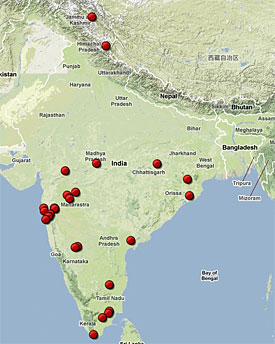World 🢖 Asia 🢖 India 🢖 Tamil Nadu
Hindu shrines 🢔 Religious architecture 🢔 Architectural wonders 🢔 Categories of wonders
Wonder
Malayadipatti rock-cut Hindu temples
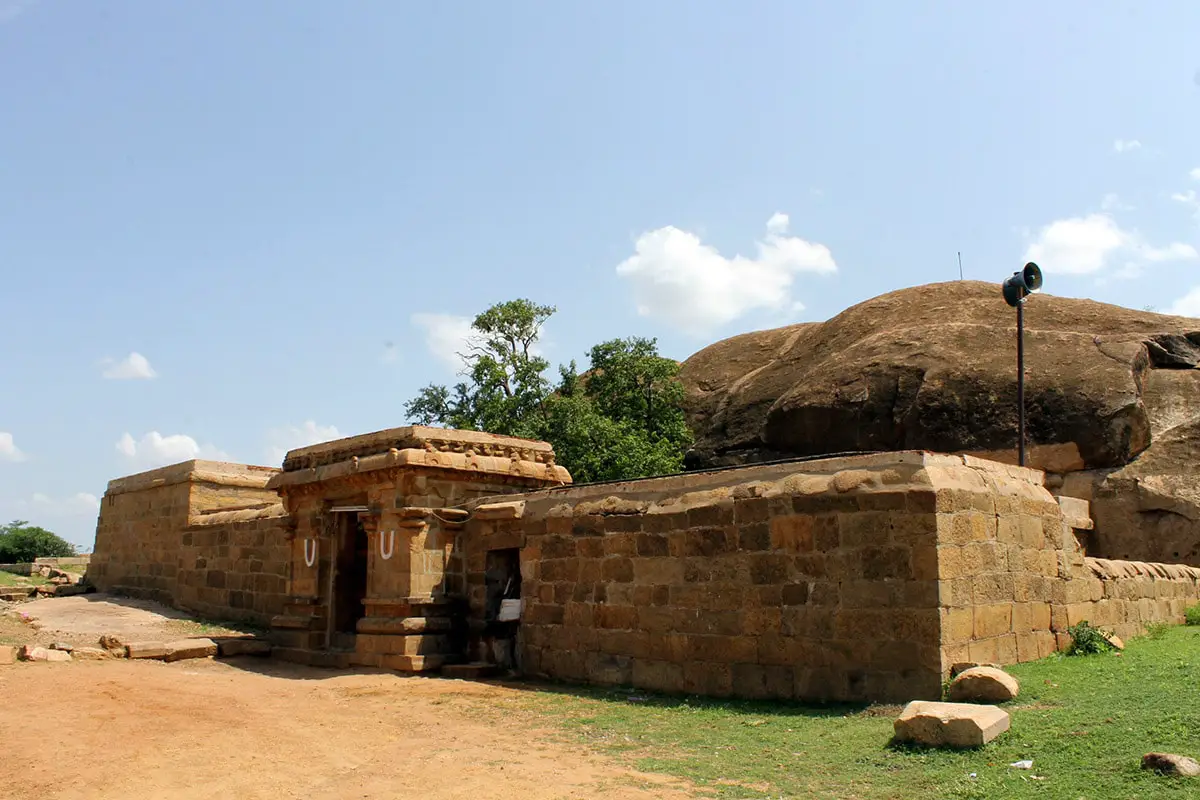
 In short
In short
South from the small Malayadipatti village there are located several granite hillocks. Here are located amazing monuments of the past – the two Malayadipatti rock-cut Hindu temples rich with stone carvings. Additional charm to these monuments is added by painted stucco covering some of these sculptures.
 43.3%
43.3%
GPS coordinates
Location, address
Alternate writing
Age
Religion
Map of the site
If you see this after your page is loaded completely, leafletJS files are missing.
 In detail
In detail
Although these temples have been made more than 1000 years ago, these are not the oldest monuments of history here. Granite cliffs contain three caves that served for Jain hermits in the 3rd – 4th century AD, these caves contain also cupules made by people 3 – 5 thousand years ago.
Hindu temples
Both rock-cut Hindu temples have been made in one granite monolith – hillock. This hillock is oriented in an east-west direction and both temples are on the west side.
Both temples are active with daily religious services held in them.
There are also two ancient stone buildings belonging to the temple complex – kitchen and Amman shrine.
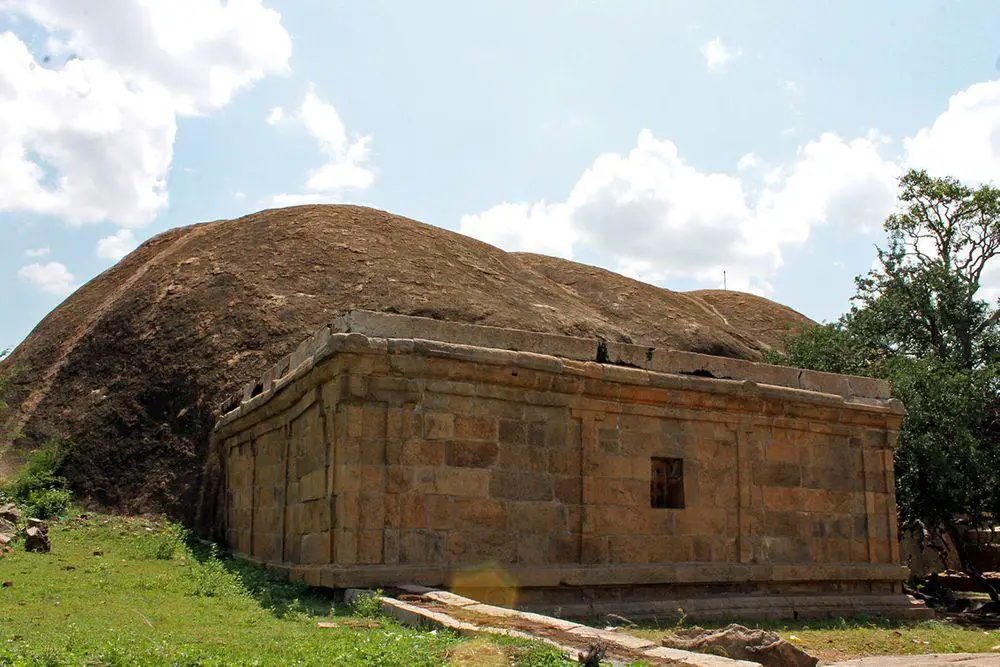
According to an inscription, this temple was excavated in 804 AD.
Temple consists of rock-cut mandapa. At the eastern end, there is sanctum sanctorum of cubical form cut inside the mandapa.
In later times, there has been built compound wall enclosing the cave and the front mandapa.
Mandapa contains four pillars – two rear pillars are connected with arched brickwork with sculptures of Muruga and Vinayaga behind, on a raised platform.
The cave portal contains two pillars and two pilasters, it is 4.64 m wide.
Mandapa is 6.70 m long in the north-south direction and 4.58 m wide. It contains a sculpture of Chandeshwara, in the middle, there is a 1 m long sculpture of Nandi ox facing the sanctum. Nandi sculpture is not cut of mother rock, it is resting on a platform of large stone blocks.
Entrance in the shrine is guarded by sculptures of two dvarapalas – guards (Mazhuvadiyar and Tirisulakar) resting on heavy clubs. The floor of the shrine is 2,11 x 2,10 m large, height is 1,90 m. The shrine contains lingam which also is cut out of mother rock.
The south wall of the mandapam contains a 3.15 m wide Saptamatrika panel showing 7 goddesses sitting between Ganesha and Veerbadra.
The west wall is adorned with a group of deities – Muruga, Sankaranarayana, and the lion vehicle of Korravai in the center. Unfortunately, this panel is damaged by vandals.
Vishnu temple
Vishnu temple is located closer to the western end of the hillock. Malayadipatti Vishnu temple is called Olipathivishnu Vishnugraham. Over the centuries-long history of this temple, it has turned into a complex of several structures.
The rock-cut temple contains a huge amount of artwork – beautiful reliefs and sculptures, often covered with painted stucco. Paintings cover walls and ceiling.
The presiding deity of this temple is Perumal, popular another name of Vishnu in Tamil Nadu. Temple though contains many more shrines for Vishnu, Shiva, and other deities.
Rock-cut temple itself consists of mukha-mandapa (verandah), ardha-mandapa (entrance chamber) and sanctum sanctorum (the main shrine). The ancient temple is entered through a row of two square pillars and pilasters at each side.
Nearly the whole surface inside the temple is covered with sculptures and reliefs, stucco, and paintings.
One wall is covered with a sculptural group showing the presiding deity – Kanniraintha Perumal (Vishnu) together with his consort Lakshmi (Nachiyar). Vishnu is holding a sangu (sacred conch) and chakra. They are joined by Brahma and Shiva as well as Nrsimhadeva and various other murtis (divinities). This relief is covered with stucco and painted. While the rock-cut cave has been made in the 8th – 9th century AD, stucco and paintings seem to be much younger – from the 16th – 17th century AD.
On the western wall of mukha-mandapa, Vishnu is shown in a seated position together with his consorts – this relief is not cut in the main rock but fitted of three large separate stones.
Another wall is covered with large relief showing reclining Vishnu with Brahmadeva in attendance above, sitting on a lotus. Gandharvas are flying around the head of Brahma’s head. This relief is cut from the cliff itself.
Temple contains many more sculptures of different deities, for example, one wall is decorated with two large images of the demons Madhu and Kaitabha. There is shown also goat-faced Thakkan.
The ceiling is covered with beautiful paintings of the Dashavatara – ten incarnations of Vishnu.
In the front of the cave temple, there are stone reliefs showing three Azhwars and Vishvaksena – considered to be commander-in-chief of Vishnu’s army.
The rock-cut temple is the oldest part of Shiva temple but in later time the front part of the cliff has got additions.
There is a built wall enclosure of large stone blocks. It is entered through a gate tower – gopuram.
This structure is flat-roofed and ornamented with carvings of elephants, birds. At four corners there are projecting four makaras – mythological creatures comparable to chimeras.
Wall enclosure extends from both sides of gopuram and extends up to the cliff monolith to the south. The eastern wall separates both rock-cut temples.
Outside the gopuram entrance, to the left, there is a sculpture of Ganesha sitting in a niche facing towards the north.
Many deities in the temple were made of destructible materials – stucco-covered wood or stone. Thus there were made and installed additional murtis of resistant material – metal or stone – which serves for daily rituals.
Vishnu cave contains 10 inscriptions. The earliest is made sometimes around 960 AD but it is not foundation inscription – thus the cave is older.
Natural caverns with ancient monuments
Granite hillocks near Malayadipatti contain three natural rock shelters with interesting monuments of the past. Two caverns contain some 400 ancient cupules – cup marks, made some 3000 – 5000 years ago. The third rock shelter contains a faint white painting, possibly made of lime. The painting shows a bird and a human form.
In the 3rd – 4th century AD these shelters were used by Jain hermits – in each of the two caves with cupules, there is made one stone bed. It is possible that the painting also was made at this time.
One of the rock shelters contains a five-line inscription in the Brahmi script.
References
- S.Sumitha, Alathuthali in Malayadipatti, Varalaaru. Accessed in the 23rd May 2010.
- Lord Brahma at Malaiyadippatti, HareKrsna.com. Accessed in the 23rd May 2010.
- Ancient cup marks found in India, Stone Pages. Accessed in the 23rd May 2010.
Malayadipatti rock-cut Hindu temples are included in the following article:
 Linked articles
Linked articles

Wonders of India
India is the seventh-largest country in the world by area, and, naturally, such a large area contains a huge amount of exciting attractions…
Wondermondo considers that India is the second richest center of architectural heritage in the world after Europe and maybe no single country in the world can match it in this respect.
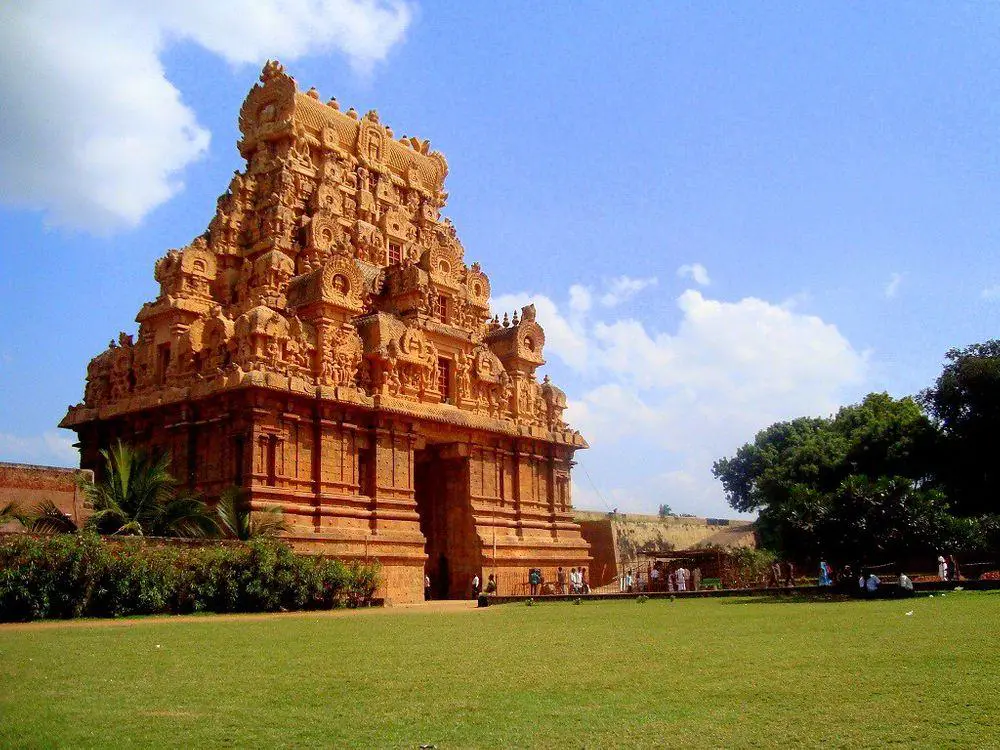
Hindu shrines
Hinduism is one of the oldest religions – possibly the oldest one among contemporary religions and Hindu temples belong to the most impressive religious buildings in the world.
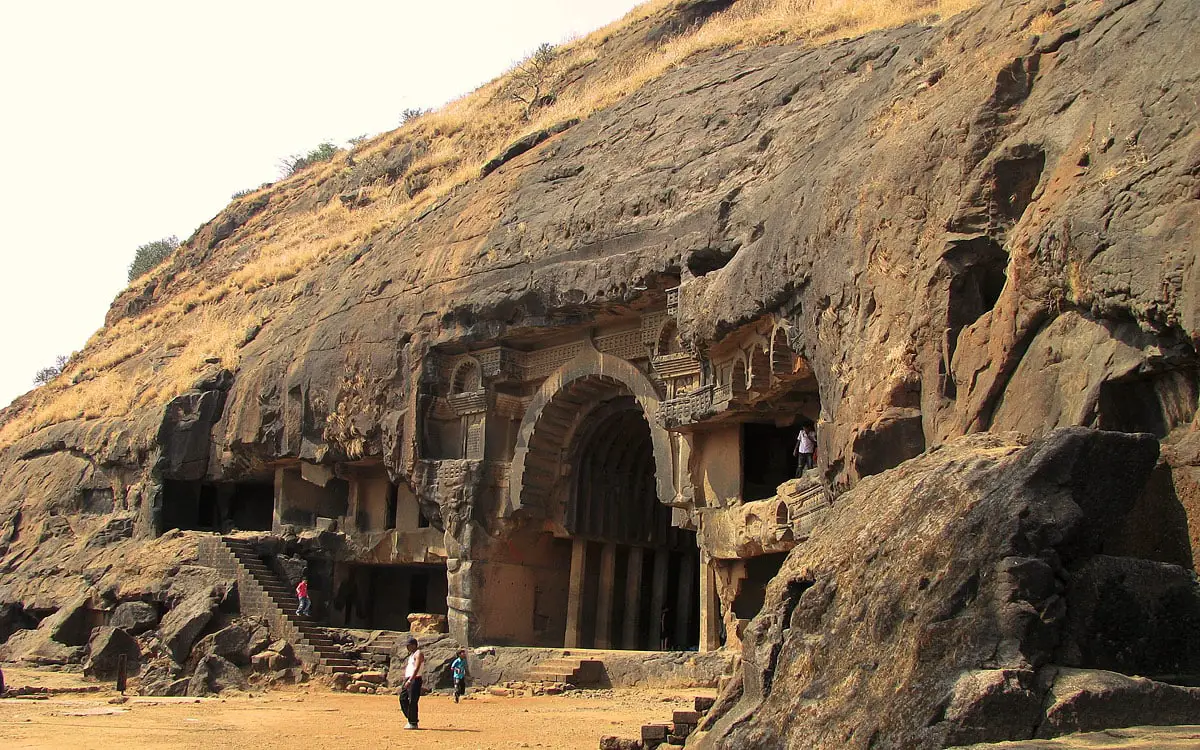
Rock-cut architecture and sculptures
Rock-cut architecture is a very ancient form of architecture – the oldest structures are more than 5 thousand years old. The resistivity of the natural stone and the constant climate inside these structures has preserved many art values around the world.
 Recommended books
Recommended books
India Unveiled: Spirit, Tradition, People
This is the one book you need to understand the spirit of India. Internationally acclaimed as the best book of its type on India, this sixth expanded, revised edition of the multi-award-winning book India Unveiled: Spirit, Tradition, People by Robert Arnett truly reveals the diversity and sacredness of the oldest continuously living civilization on earth.
India: A Sacred Geography
A spiritual history of the world’s most religiously complex and diverse society, from one of Harvard’s most respected scholars.

